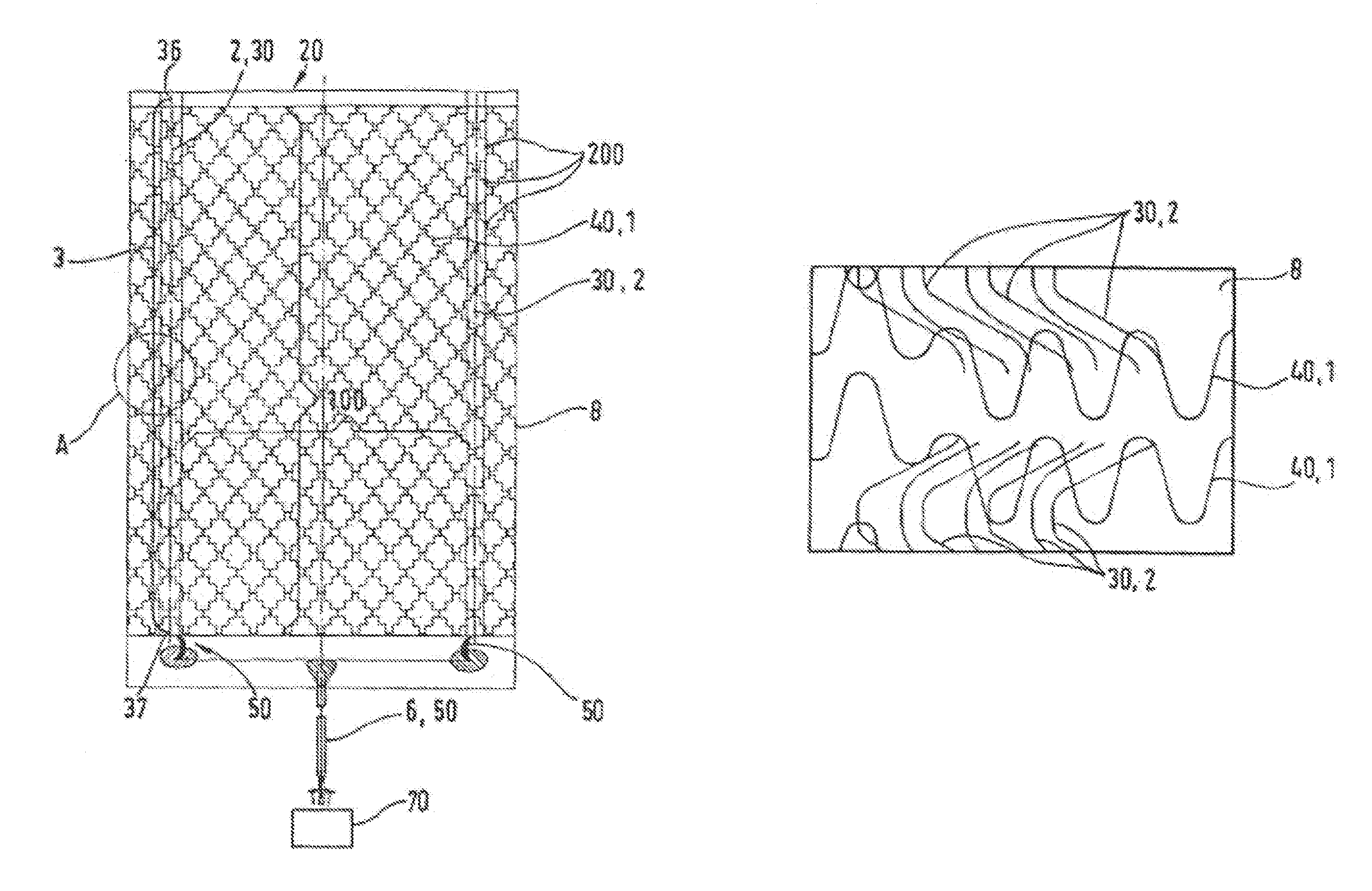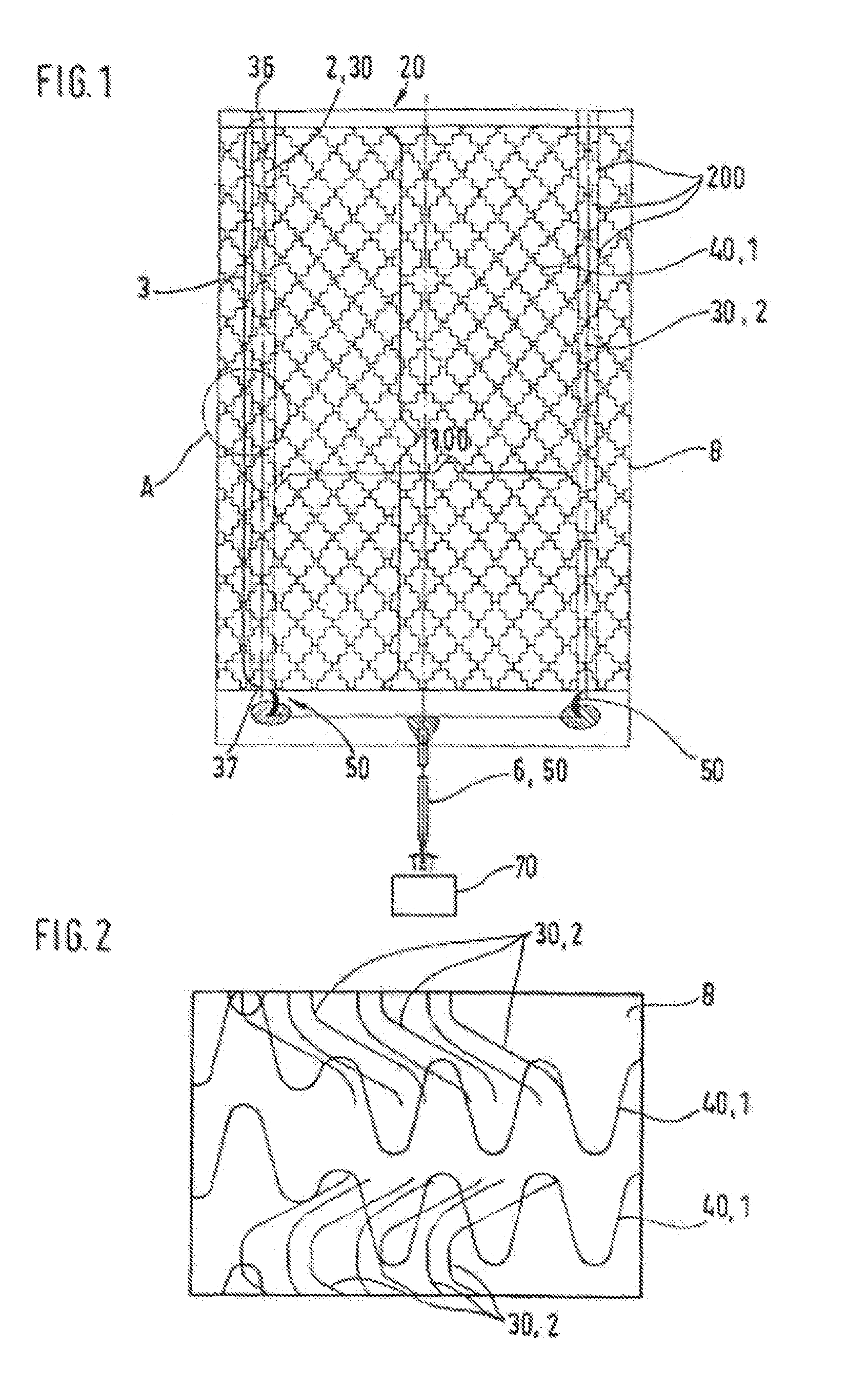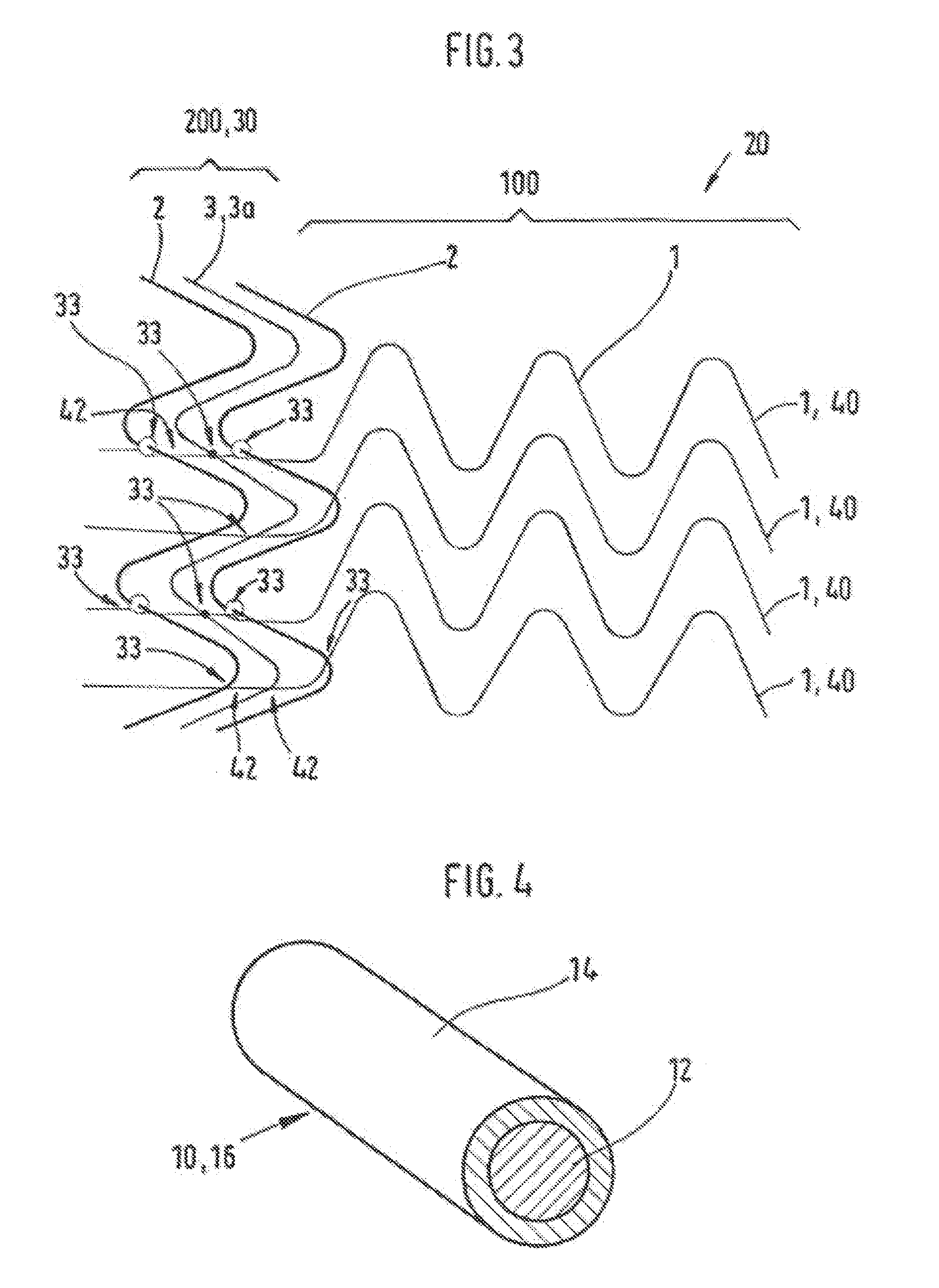Flat heating element
a heating element and flat technology, applied in the field of flat heating elements, can solve the problems of fatigue and/or breakage, mechanical stress, and long-lasting use, and achieve the effects of long-lasting, corrosion-resistant, and economical
- Summary
- Abstract
- Description
- Claims
- Application Information
AI Technical Summary
Benefits of technology
Problems solved by technology
Method used
Image
Examples
Embodiment Construction
[0047]FIG. 1 shows an electrical element 20 with a flat carrier 8, with a pair of electrodes 30 which are disposed thereon spaced from one another and approximately parallel to one another and at contact areas 200 are connected, via a plurality of heating elements 40, to one another. The heat conductors 40 are disposed approximately parallel to one another on the carrier 8 and are electrically connected in parallel. The electrodes 30 for their part are connected, via electrical connecting lines 50, to a current source 70. The heat conductors 40 are formed from conductor strands 1 for heating of the heating element, preferably of carbonized plastic threads. The electrodes 30 are formed of conductor strands 2 for supplying electrical energy into the heating element 20, preferably of copper litz wires.
[0048]During operation, current flows from the current source, via a connecting line 6 and the one electrode 30, into the plurality of heat conductors 40. Their heating heats the heating ...
PUM
 Login to View More
Login to View More Abstract
Description
Claims
Application Information
 Login to View More
Login to View More - R&D
- Intellectual Property
- Life Sciences
- Materials
- Tech Scout
- Unparalleled Data Quality
- Higher Quality Content
- 60% Fewer Hallucinations
Browse by: Latest US Patents, China's latest patents, Technical Efficacy Thesaurus, Application Domain, Technology Topic, Popular Technical Reports.
© 2025 PatSnap. All rights reserved.Legal|Privacy policy|Modern Slavery Act Transparency Statement|Sitemap|About US| Contact US: help@patsnap.com



